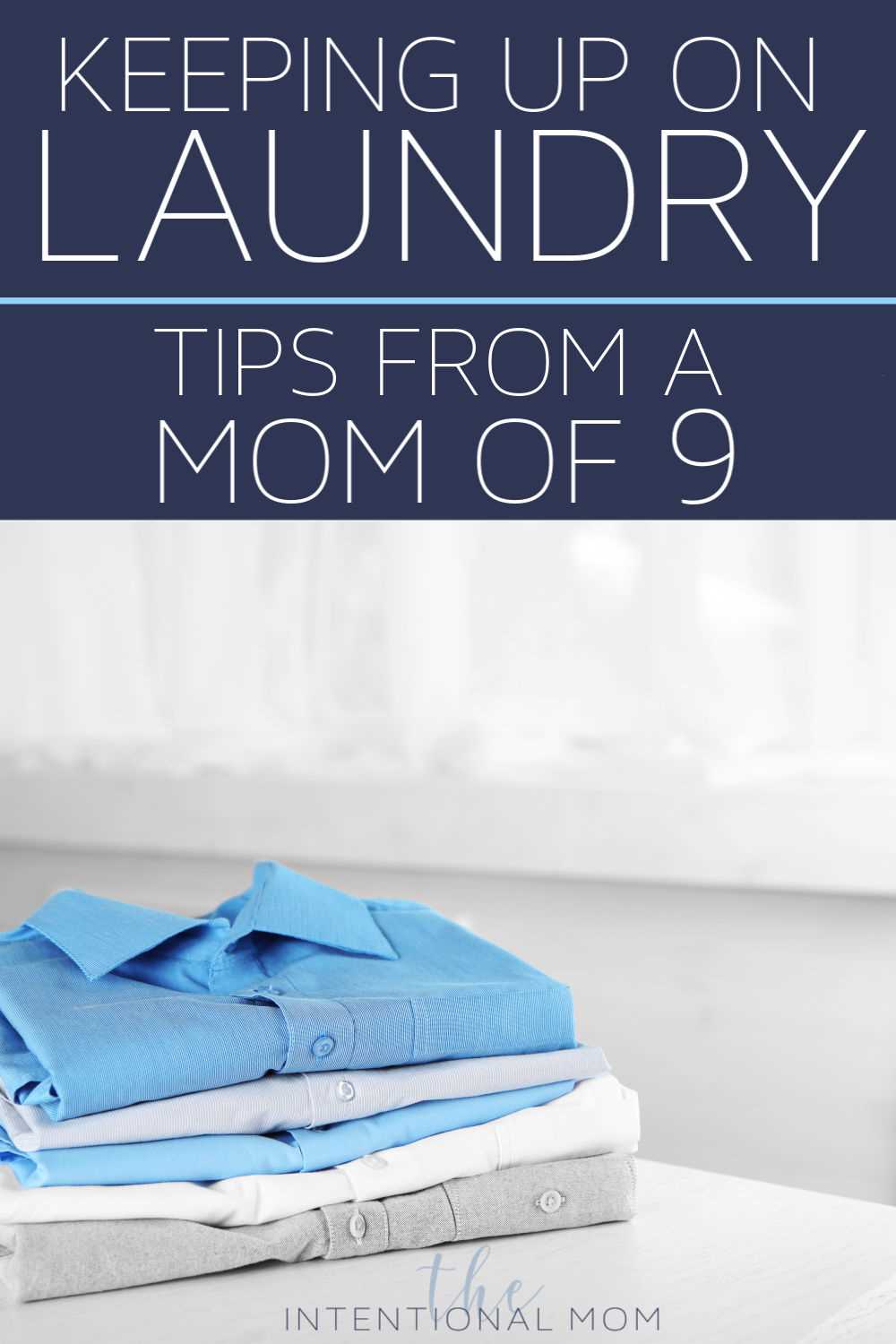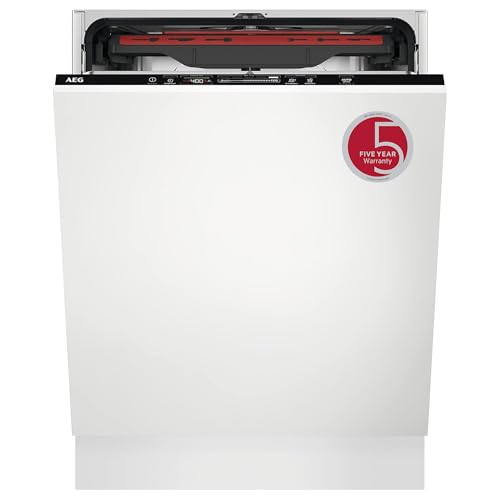
Laundry can quickly become a never-ending chore that feels impossible to keep up with. As soon as you finish one load, there always seems to be another one waiting. However, by implementing a few effective tips and strategies, you can stay on top of your laundry and make the process more manageable.
1. Sort your laundry: Sorting your laundry into different categories such as whites, colors, delicates, and towels can help streamline the process. This way, you won’t have to spend time separating your clothes before each load.
2. Set a schedule: Creating a laundry schedule can help you stay organized and ensure that you’re dedicating specific times to do your laundry. Whether you prefer doing it once a week or in smaller increments throughout the week, having a set schedule can help you stay on track.
3. Make use of time-saving techniques:
There are several time-saving techniques you can implement to make doing laundry more efficient. One example is starting a load of laundry in the morning before you leave for work and then switching it to the dryer when you get home. This way, you can take advantage of the time you’re out of the house to get a head start on your laundry.
Sorting Your Laundry

One of the most important steps in keeping up with laundry is sorting it properly. Sorting helps to prevent damage to your clothes and ensures that they get cleaned effectively.
Sort by Color
Start by sorting your laundry by color. Separate whites, coloreds, and darks into different piles. This helps prevent color bleeding and keeps your whites looking bright.
Separate Delicates
If you have delicate clothing items such as lingerie, silk, or lace, it’s important to wash them separately. Delicates require gentle treatment and should be washed on a delicate or hand wash cycle.
Separate Heavy Items

Items like towels, blankets, and jeans can be heavy and may create an imbalance in the washing machine. Separate these heavy items from lighter ones to prevent damage and ensure a thorough clean.
Consider Special Care Items
If you have clothing items that require special care such as dry cleaning or specific temperature settings, be sure to separate them as well. This ensures that they receive the proper treatment they require.
Use a Sorting System
To make sorting easier and more efficient, consider using a sorting system such as laundry baskets or labeled hampers. This helps you keep your laundry organized and saves time when it comes to washing.
By following these tips and sorting your laundry properly, you can ensure that your clothes are cleaned effectively and maintained in good condition for longer.
Creating a Laundry Schedule

One of the key factors in keeping up with laundry is to establish a laundry schedule. By creating a routine and sticking to it, you can ensure that you always have clean clothes available when you need them. Follow these steps to create an effective laundry schedule:
- Assess your laundry needs: Take inventory of your clothes and determine how often you need to do laundry. This will depend on factors such as the size of your household, the number of clothes each person has, and your personal preferences.
- Choose specific days: Decide on specific days of the week for doing laundry. It can be helpful to spread out the load by doing smaller loads more frequently rather than waiting until you have a huge pile. You may choose to do laundry every other day, twice a week, or once a week depending on your needs.
- Create a schedule: Write down your chosen laundry days on a calendar or in a digital planner. This will help you remember when laundry needs to be done and stay organized.
- Sort your laundry: Before each laundry day, sort your clothes into different piles based on their color, fabric type, and washing instructions. This will help you save time and ensure that each load is washed properly.
- Establish a washing routine: Develop a routine for washing, drying, and folding your clothes. This can include setting a timer for each load, using specific settings on your washing machine, and dedicating a specific area for folding and organizing clean clothes.
- Involve the whole family: If you live with other people, encourage them to participate in the laundry schedule. Assign specific tasks to each family member, such as gathering dirty clothes, folding clean clothes, or putting away laundry. This can help to distribute the workload and make the process more efficient.
- Stick to the schedule: Consistency is key when it comes to maintaining a laundry schedule. Try to stick to the designated days and times as much as possible. It may be helpful to set reminders on your phone or use visual cues to remind yourself of laundry days.
By following these steps and creating a laundry schedule, you can stay on top of your laundry and ensure that you never run out of clean clothes.
Using the Right Amount of Detergent

Tired of laundry coming out less than clean or with a soapy residue? One common mistake that many people make is using too much detergent. Not only does this waste money, but it can also damage your clothes and washing machine.
Follow the Instructions

When it comes to using detergent, it’s important to follow the instructions on the packaging. Different detergents have different concentrations and require specific amounts for optimal cleaning. Using more than the recommended amount can lead to excessive suds and difficulty rinsing them out.
Measure Properly
Using a measuring cup or the markings on the cap of your detergent bottle can help you use the right amount. Keep in mind that there may be different measurements for different load sizes, so be sure to adjust accordingly.
Consider Water Hardness
The hardness of your water can also affect how much detergent you should use. Hard water contains minerals that can react with detergent and reduce its effectiveness. If you have hard water, you may need to use a little more detergent to adequately clean your clothes.
Preventing Residue
If you’re finding residue on your clothes after washing, it could be a sign of using too much detergent. To prevent this, try reducing the amount of detergent you use and run an extra rinse cycle to ensure all the soap is rinsed away.
| Tip | Description |
|---|---|
| Follow the instructions | Read the recommended amount on the detergent packaging |
| Measure properly | Use a measuring cup or the markings on the detergent bottle |
| Consider water hardness | Adjust the detergent amount based on the hardness of your water |
| Prevent residue | Reduce the amount of detergent and run an extra rinse cycle if needed |
By using the right amount of detergent, you can ensure cleaner clothes and a properly functioning washing machine. Don’t be tempted to use more than necessary, as it may lead to unwanted consequences.
Optimal Load Size
When it comes to doing laundry efficiently, having an optimal load size is crucial. Overloading the washing machine can result in clothes not getting properly cleaned, while underloading can be a waste of water and energy. Here are some tips to help you determine the optimal load size for your laundry:
- Check the machine’s manual: Different washing machines have different load capacity recommendations. Make sure to consult the manual to find out the maximum load size for your machine.
- Consider fabric types: Different fabrics require different care. In general, it is advisable to separate heavy and lightweight fabrics. This will ensure better cleaning results and prevent any damage to delicate items.
- Leave enough space: It is important to leave enough space for the clothes to move around inside the machine. As a rule of thumb, aim to fill the machine around 3/4 full. This provides enough room for proper agitation and cleaning.
- Don’t forget about room for water: It’s important to remember that water needs space to circulate properly to ensure effective cleaning. Overloading the machine can restrict water flow and hinder the cleaning process.
By following these tips, you can determine the optimal load size for your laundry. This will help you achieve better cleaning results while saving water and energy in the process.
Implementing Good Habits: Folding and Putting Away
Folding and putting away laundry can often be the most tedious part of the laundry routine. However, by implementing some good habits, you can make this task more manageable and efficient. Here are some tips to help you fold and put away your laundry with ease:
Create a Folding Routine
Developing a consistent folding routine can streamline the process and make it more manageable. Set aside a specific time each week to fold your laundry, such as after it’s been washed and dried. Having a regular routine will help you stay on top of the task and prevent the laundry from piling up.
Sort and Organize

Prior to folding, sort your laundry by category. Separate your clothes into piles of shirts, pants, underwear, socks, and any other categories that make sense to you. This will make it easier to fold and put away each item in an organized manner.
Invest in Folding Tools

Consider investing in folding tools to ensure consistent folding and save time. Tools such as folding boards or templates can help you fold clothes into uniform sizes and shapes. This not only makes your drawers neater but also maximizes storage space by creating a uniformed appearance.
Use Drawer Dividers
Drawer dividers are a great way to keep folded clothes organized and prevent them from becoming messy. Use dividers to separate different clothing items within each drawer, such as using separate compartments for shirts, pants, and underwear. This will make it easier to find what you need when getting dressed and maintain an organized space.
Label Drawers

If you have multiple drawers for different types of clothes, consider labeling each drawer. Use labels or tags to indicate what should be placed in each drawer. For example, you can label one drawer as “shirts,” another as “pants,” and so on. This will save you time when putting away laundry and help you maintain an organized system.
Involve the Whole Family
Getting the whole family involved in folding and putting away laundry can make the task more manageable and enjoyable. Assign specific responsibilities to each family member, such as folding their own clothes or organizing certain drawers. This not only lightens the load for you but also teaches your family members valuable skills and responsibility.
Make It a Habit
Lastly, make folding and putting away laundry a habit. By consistently following these practices, it will become second nature to put away your freshly folded laundry. Over time, you’ll find that it takes less effort and time to complete this task, and your laundry routine will become more efficient.
By implementing these good habits, you can make folding and putting away laundry a more manageable and efficient task. With a consistent routine and organizational systems in place, you’ll be able to enjoy neatly folded clothes and a clutter-free space.
FAQ
What are some effective tips for keeping up with laundry?
One effective tip for keeping up with laundry is to establish a regular laundry routine. Set aside specific days or times each week to do laundry, so that it doesn’t pile up. Another tip is to sort your laundry as soon as possible. Having separate hampers or baskets for different types of laundry, such as whites, darks, and delicates, can help make the sorting process easier. Additionally, consider using a laundry schedule or checklist to stay organized and on track. Finally, try to fold and put away clean laundry as soon as possible to prevent it from becoming clutter.
How can I make doing laundry less overwhelming?
There are a few strategies you can try to make doing laundry less overwhelming. First, break the task into smaller, manageable chunks. Instead of doing all your laundry at once, focus on one load or one type of laundry at a time. This can make the task feel more manageable and less daunting. Another tip is to involve your family members or roommates in the laundry process. Delegate certain responsibilities, such as sorting or folding, to share the workload. Additionally, consider setting a timer or using a laundry app to help you stay focused and prevent procrastination.
Can you provide some time-saving tips for laundry?
Certainly! One time-saving tip for laundry is to pre-treat stains as soon as possible. This can help prevent stains from setting and make them easier to remove during the wash. Another tip is to invest in a good washing machine with efficient cycles and features. Modern washing machines often have quick wash options or load sensing technology that can help save time. Additionally, consider using laundry pods or pre-measured detergent packs to eliminate the need for measuring and pouring. Finally, try to fold and put away laundry as soon as it’s done, as this can prevent wrinkles and save time later on.
How can I prevent laundry from getting wrinkled?
There are a few strategies you can use to prevent laundry from getting wrinkled. First, try to remove clothes from the dryer as soon as the cycle is done. Leaving clothes sitting in the dryer can cause them to wrinkle from the heat and steam. Another tip is to shake out clothes before hanging or folding them. This can help remove any creases or wrinkles that may have formed during the drying process. Additionally, consider using fabric softener or dryer sheets, as they can help reduce static and wrinkles. Finally, if you’re unable to immediately fold or hang clothes, try using a wrinkle release spray or hanging them in the bathroom while taking a hot shower, as the steam can help relax any wrinkles.
What is the best way to organize and store laundry supplies?
Organizing and storing laundry supplies can help make the laundry process more efficient. One effective way to organize supplies is to use clear containers or baskets to hold items such as detergent, stain removers, and dryer sheets. This allows you to easily see what you have and prevents items from getting lost. Another tip is to designate a specific area or shelf in your laundry room or cupboard for laundry supplies. This keeps everything in one place and makes it easy to access when needed. Additionally, consider using labels or markers to clearly identify different products. This can help prevent confusion and ensure that you’re using the correct supplies for each load of laundry.












